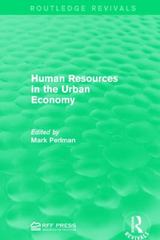Question
Can you please help me with this exercice, this is not a homework Its about International Trade and Globalization 1) Monopolistic Competition Suppose
Can you please help me with this exercice, this is not a homework
Its about " International Trade and Globalization "
1) Monopolistic Competition Suppose that automobiles are produced by a monopolistically competitive industry. The demand curve of a producer is as follows: Q = S (1/n - 1/30,000(P - Pav )) (1) Q is the number of cars sold per firm, S is the total number of cars sold in the industry, n is the number of firms, P is the price charged, and Pav is the average price of other firms. The technology is characterized by fixed costs of F = 750,000,000 and marginal costs of c = 5,000 so that the total cost curve is described by
C = 750, 000, 000 + 5000Q (2)
1. Draw the marginal cost and average cost curves.
2. Assume that there are two countries: country H and country F. Assume that demand and technology are the same in each country. Also assume a symmetric equilibrium. Suppose that country H has annual sales of 900,000 automobiles, while country F has annual sales of 1.6 million. Assume that these countries cannot trade with each other. Draw a PP curve and a CC curve for each country. What are the number of firms and prices in country H and country F?
3. Suppose that country H and country F enter into a free trade regime. What is the number of producers and the price in the new integrated market? In what sense can we speak of a trade model not based on comparative advantage?
2) Firms Heterogeneity
Now suppose that firms are heterogeneous in terms of marginal costs. As in the previous exercise, firms face a fixed cost of production F. Consider two firms whose marginal costs are c1 < c2
1. Assume the economy is closed. Show on a graph that the most productive companies are larger, charge lower prices, have higher markups and higher operating profits. Draw on another graph the relationship between operating profit and marginal cost.
2. Why can we say that in this model, trade generates winners and losers? Show it on a graph.
3. If trade costs are added to the model, what implications do they have on the type of companies that become exporters?
Step by Step Solution
There are 3 Steps involved in it
Step: 1

Get Instant Access to Expert-Tailored Solutions
See step-by-step solutions with expert insights and AI powered tools for academic success
Step: 2

Step: 3

Ace Your Homework with AI
Get the answers you need in no time with our AI-driven, step-by-step assistance
Get Started


